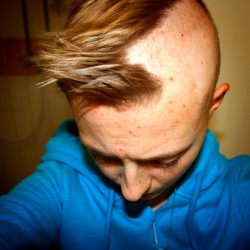Symptoms of Trichotillomania Disorder
Trichotillomania is a serious disorder that affects many people the world over. While the name may be difficult to pronounce, it is easy to understand what this condition is all about.
Here is a basic definition, as shared by the Mayo Clinic:
“Trichotillomania is a disorder that involves recurrent, irresistible urges to pull out hair from your scalp, eyebrows or other areas of your body, despite trying to stop.”
To some, this sounds like a disorder that should be easy to overcome. However, those who suffer from the condition realize that nothing could be further from the truth. They are well aware that beating this disorder is a challenge on many different levels.
Hair pulling can result in a variety of problems, including bald spots. The resulting appearance can lead to interference in the person’s social and work life.
Note: people who suffer from trichotillomania will often times do whatever it takes to disguise hair loss.
There are people who only have a mild case of trichotillomania. These people often have the ability to deal with the problem on their own. On the other side of things, there are people who have a compulsive urge to pull hair out of their own body. Even though they know it will alter their appearance, they continue to do so.
If you are struggling with trichotillomania know that help is available. Call 888-647-0051 (Who Answers?) toll free to discuss treatment options.
What are the Symptoms?

People with hair pulling disorder often have large patches of baldness.
Do you believe you are suffering from trichotillomania? Do you get the feeling that a loved one is faced with this serious condition? If so, it would be in your best interest to become familiar with the most common signs and symptoms of the disorder. This allows you to pinpoint the problem, thus getting the necessary level of help.
Some of the most common symptoms of trichotillomania include:
- Repeated pulling of the hair, most often from the scalp. Over time, however, some people develop the urge to pull hair from other parts of their body, such as arms and legs.
- Stress associated with the thought of pulling.
- Stress associated with the urge to avoid pulling.
- A sense of relief once the hair is pulled.
- Bald areas of the scalp and other parts of the body.
- Chewing or biting hair that has been pulled.
Note: while not always the case, the majority of people who suffer from trichotillomania also pick their skin, chew their lips, and/or bite their nails. This is just another one of the more common symptoms of trichotillomania.
Types of Hair Pulling
It is easy to believe that all people with trichotillomania are the same, however, this is not necessarily true.
There are two types of hair pulling:
- Automatic. This is when a person pulls their hair when they don’t even realize they are doing so, such as when they are watching television or reading a book.
- Focused. This is when a person pulls their hair to relieve stress or tension. For instance, they do so when they are stressed out at work. Some people to such lengths that they have rituals for hair pulling.
It is not uncommon for a person to take part in both automatic and focused hair pulling, depending on how they are feeling and what they are doing at that time.
There is no cure for trichotillomania, and it is considered a long term disorder. Fortunately, there are treatment options that can help a person better deal with the condition. Some people are able to completely overcome the disorder.
If a person is left untreated for trichotillomania, symptoms often times worsen. Call 888-647-0051 (Who Answers?) to learn about treatment options.
The Many Risk Factors
In addition to the symptoms of trichotillomania, you should learn more about the risk factors that can cause the condition. These include:
- Age. Most of the time, trichotillomania develops during the early teens (or shortly before reaching this age).
- Family history. If a person has a close relative with trichotillomania, there is a better chance they will suffer from the condition as well.
- Other disorders. Many people with trichotillomania have other disorders, such as obsessive compulsive disorder and depression.
- Positive reinforcement. Many people with trichotillomania feel that pulling their hair gives them a sense of relief. Subsequently, they continue to do so because the way it makes them feel.
- Negative emotions. Hair pulling can also be a way to deal with negative emotions, such as stress, tension, and anxiety.
Nobody wants to be faced with this disorder, but there are ways to put it in the past. Over the years, there have been many studies on the impact of trichotillomania, as well as treatment options. For example, habit reversal training is one treatment strategy to consider.
If you or a loved one is displaying the signs and symptoms of trichotillomania, it may be time to consult with a qualified medical professional. There are people who can overcome this disorder without professional help, but it is easier said than done.
If nothing else, knowing the symptoms of trichotillomania can help you or somebody in your life get the appropriate help without delay. We can help you find the best treatment for your personal situation. Call 888-647-0051 (Who Answers?) today.





